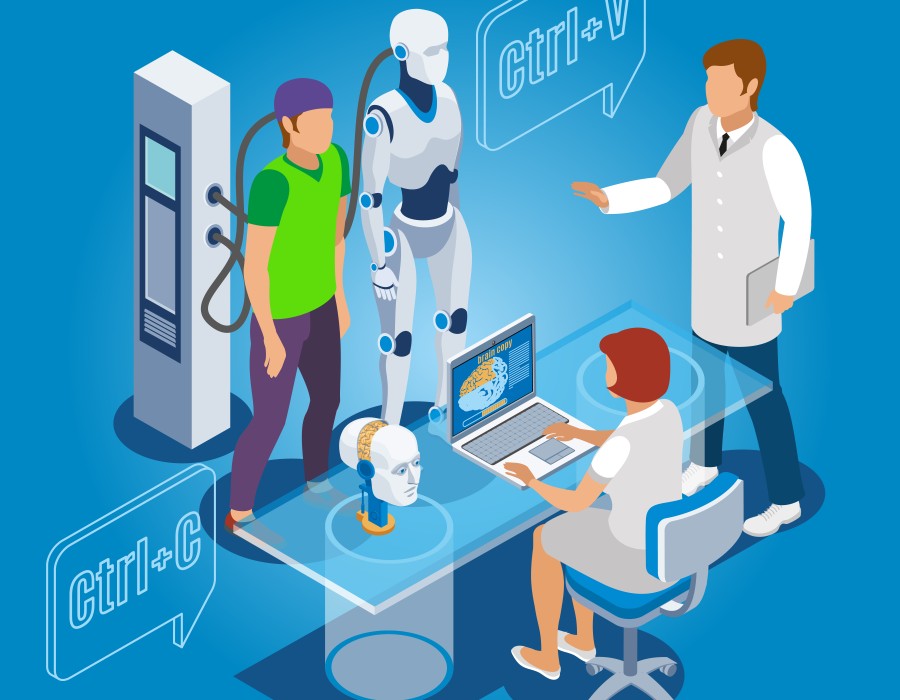Introduction
Chronic diseases like diabetes, hypertension, and heart disease affect millions worldwide, straining healthcare systems and patients alike. Managing these conditions requires frequent monitoring, timely interventions, and personalized care—tasks that traditional in-person visits often struggle to deliver efficiently. Enter Remote Patient Monitoring software, a transformative technology enabling healthcare providers to monitor patients’ health data in real-time, from anywhere. This blog explores how RPM software is revolutionizing chronic disease management and scaling care delivery to meet growing demands.
What is Remote Patient Monitoring (RPM) Software?
RPM software allows healthcare providers to track patients’ health metrics remotely using connected devices like wearable sensors, blood pressure monitors, glucometers, and smart scales. These devices collect data—such as heart rate, blood sugar levels, or oxygen saturation—and transmit it securely to healthcare platforms. Clinicians can then analyse this data, identify trends, and intervene, when necessary, all without requiring patients to visit a clinic.
Key features of RPM software include:
- Real-time data collection: Continuous or periodic updates from connected devices.
- Data analytics: Tools to detect anomalies or trends in patient health metrics.
- Patient-provider communication: Secure messaging or telehealth integration for follow-ups.
- Alerts and notifications: Automated warnings for critical readings, like high blood pressure.
- EHR integration: Seamless syncing with electronic health records for comprehensive care.
The Growing Need for Chronic Disease Management
Chronic diseases account for 60% of global deaths and a significant portion of healthcare costs. In the U.S., 60% of adults have at least one chronic condition, and managing these diseases consumes over $3.7 trillion annually. Traditional care models, reliant on in-person visits, face challenges like:
- Limited access: Rural or underserved areas lack sufficient healthcare facilities.
- Resource constraints: Clinicians are overburdened, with too many patients and not enough time.
- Delayed interventions: Infrequent visits can miss critical changes in a patient’s condition.
RPM software addresses these challenges by enabling proactive, scalable, and patient-centered care.
How RPM Software Scales Chronic Disease Management
1. Continuous Monitoring for Proactive Care
Unlike periodic check-ups, RPM provides a steady stream of data, allowing clinicians to catch issues early. For example, a diabetic patient’s glucometer can alert providers to dangerous blood sugar spikes, prompting immediate advice or medication adjustments. This reduces hospitalizations and improves outcomes.
2. Improved Access for Underserved Populations
RPM eliminates geographical barriers. Patients in rural areas or those with mobility issues can receive high-quality monitoring from home. For instance, a heart failure patient using a connected scale can have their weight monitored daily to detect fluid retention—a common precursor to hospitalization.
3. Efficiency Through Automation
RPM software automates data collection and analysis, reducing the workload on healthcare providers. Algorithms can flag abnormal readings, allowing clinicians to focus on high-risk patients rather than sifting through routine data. This scalability lets providers manage larger patient populations without compromising care quality.
4. Patient Empowerment and Engagement
RPM encourages patients to take an active role in their health. User-friendly apps provide insights into their metrics, like daily blood pressure trends, fostering adherence to treatment plans. Gamified features or reminders can further boost engagement, critical for chronic conditions requiring lifestyle changes.
5. Cost Savings for Patients and Systems
By reducing hospital readmissions and emergency visits, RPM lowers healthcare costs. A 2023 study found that RPM for heart failure patients reduced 30-day readmissions by 20%. Patients also save on travel and time off work, making care more affordable.
Real-World Impact of RPM
- Diabetes Management: RPM platforms like Livongo integrate glucometer data with coaching, helping patients maintain stable blood sugar levels. A study showed a 1.2% reduction in HbA1c levels for users.
- Hypertension: Devices like Omron’s connected blood pressure monitors enable daily tracking, with alerts for readings above safe thresholds, reducing stroke risk.
- Heart Failure: BioTel’s RPM solutions monitor weight and symptoms, cutting readmission rates by enabling timely diuretic adjustments.
Challenges and Considerations
While RPM is transformative, it’s not without hurdles:
- Data Privacy: Transmitting sensitive health data requires robust encryption and compliance with HIPAA or GDPR.
- Technology Adoption: Elderly patients may struggle with device setup or app navigation, necessitating user-friendly designs and support.
- Reimbursement: Although CMS expanded RPM billing codes, coverage varies globally, affecting adoption.
- Equity: Access to devices and reliable internet remains a barrier for low-income patients.
Addressing these challenges through policy, training, and equitable access will maximize RPM’s impact.
The Future of RPM in Chronic Disease Management
RPM is poised for exponential growth. Advances in AI and wearables will enhance predictive analytics, enabling earlier interventions. For example, AI could analyze heart rate variability to predict heart failure exacerbations days in advance. Integration with telehealth and virtual care platforms will create seamless care ecosystems. Additionally, 5G networks will improve data transmission speeds, supporting real-time monitoring for complex conditions.
Policymakers and healthcare systems must prioritize RPM adoption by expanding reimbursement, subsidizing devices for underserved groups, and investing in digital literacy programs. As these barriers fall, RPM will become a cornerstone of chronic disease management.
Conclusion
Remote Patient Monitoring software is reshaping how we manage chronic diseases, offering a scalable, proactive, and patient-centric approach. By enabling continuous monitoring, improving access, and reducing costs, RPM empowers both patients and providers to tackle the global chronic disease burden. As technology and policies evolve, RPM’s potential to transform healthcare will only grow, paving the way for a healthier, more connected future.





Comments